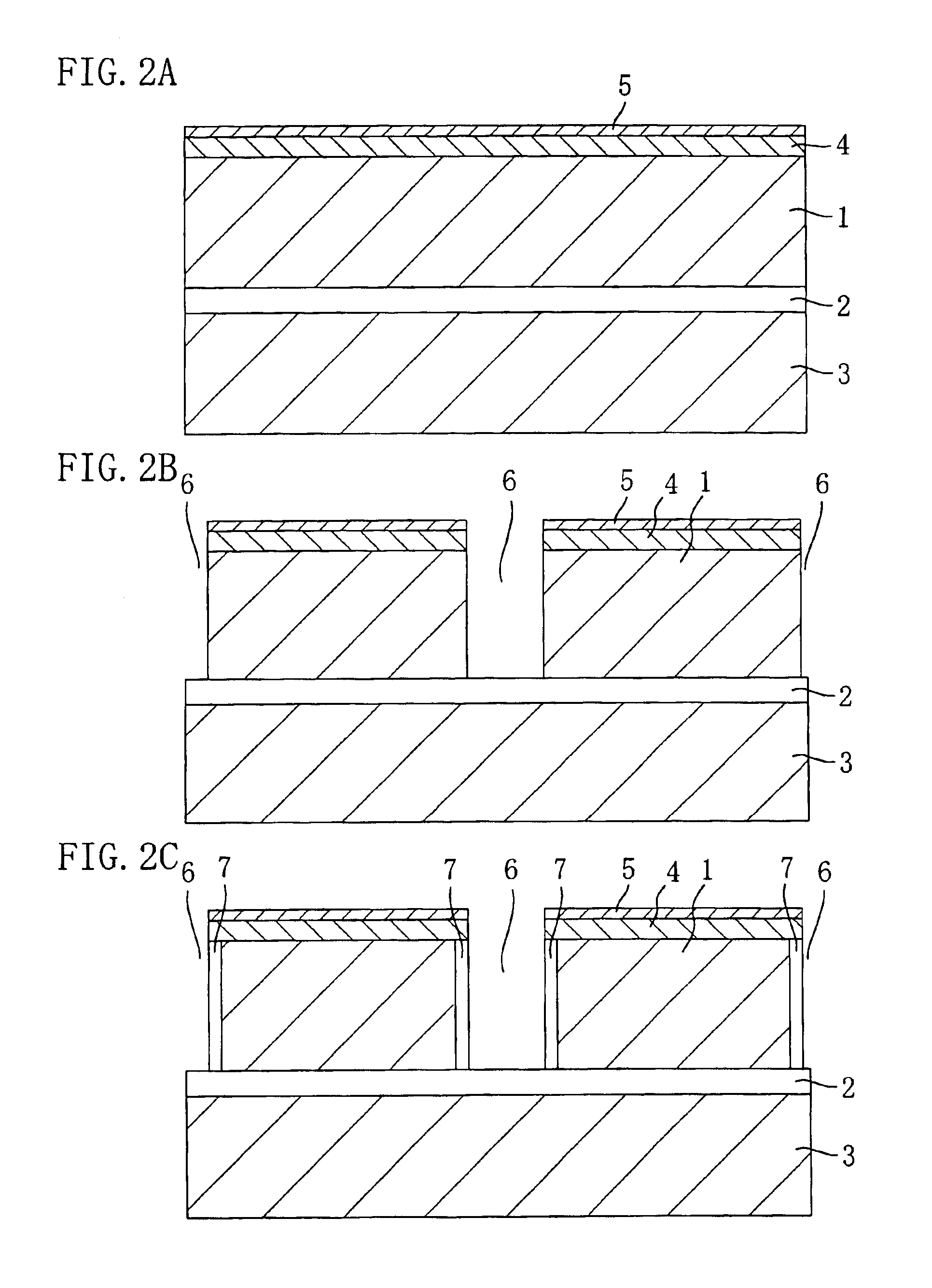Semiconductor device using an SOI substrate and having a trench isolation and method for fabricating the same
a technology of soi substrate and semiconductor device, which is applied in the direction of semiconductor device, electrical apparatus, transistor, etc., can solve the problems of crystal defects, low breakdown strength of device, increased dielectric breakdown strength, etc., and achieves the effect of suppressing stress generation and increasing dielectric breakdown strength
- Summary
- Abstract
- Description
- Claims
- Application Information
AI Technical Summary
Benefits of technology
Problems solved by technology
Method used
Image
Examples
embodiment 1
(Structure of Semiconductor Device)
FIG. 1 is a cross-sectional view showing a structure of a semiconductor device using an SOI substrate according to a first embodiment of the present invention. As shown in FIG. 1, the semiconductor device of this embodiment is formed using an SOI substrate which includes: a semiconductor substrate 3 made of single-crystalline silicon; an insulating layer 2 with a thickness of 900 nm provided on the principal surface of the semiconductor substrate 3; and a semiconductor layer 1 with a thickness of 3.5 μm made of single-crystalline silicon and provided on the insulating layer 2.
The semiconductor layer 1 is divided into a large number of active regions 1a, 1b, . . . by a trench isolation region Treis. FIG. 1 shows only two of the active regions, i.e., the active regions 1a and 1b. A p-channel type MISFET (hereinafter, referred to as a pMISFET) is provided in the active region 1a, and an n-channel type MISFET (hereinafter, referred to as an nMISFET) is...
embodiment 2
In the method for fabricating a semiconductor device according to the first embodiment or the modified example of the first embodiment, part of the polycrystalline semiconductor layer 9 of the first conductivity type is changed into the polycrystalline semiconductor layer 11 of the second conductivity type using an ion implantation technique, in order to form the polycrystalline semiconductor layer 11. On the other hand, according to a method for fabricating a semiconductor device according to a second embodiment of the present invention, a process of forming a polycrystalline semiconductor layer of the second conductivity type with CVD including in-situ doping is adopted.
FIGS. 5A through 5C are cross-sectional views showing respective process steps for fabricating a semiconductor device of the second embodiment. In this embodiment, the process steps in the first embodiment or the modified example of the first embodiment shown in FIGS. 2A through 3B are performed before a process st...
embodiment 3
(Structure of Semiconductor Device)
FIG. 6 is a cross-sectional view showing a structure of a semiconductor device using an SOI substrate according to a third embodiment of the present invention. As shown in FIG. 6, the semiconductor device of this embodiment is formed using an SOI substrate including: a semiconductor substrate 3 of single-crystalline silicon; an insulating layer 2 with a thickness of 900 nm provided on the principal surface of the semiconductor substrate 3; and a semiconductor layer 1 with a thickness of 3.5 μm m made of single-crystalline silicon and provided on the insulating layer 2.
The semiconductor layer 1 is divided into a large number of active regions 1a, 1b, . . . by a trench isolation region Treis. FIG. 6 shows only two of the active regions, i.e., the active regions 1a and 1b. A pMISFET having the same structure as in the first embodiment is provided in the active region 1a, and an nMISFET having the same structure as in the first embodiment is provided i...
PUM
 Login to View More
Login to View More Abstract
Description
Claims
Application Information
 Login to View More
Login to View More - R&D
- Intellectual Property
- Life Sciences
- Materials
- Tech Scout
- Unparalleled Data Quality
- Higher Quality Content
- 60% Fewer Hallucinations
Browse by: Latest US Patents, China's latest patents, Technical Efficacy Thesaurus, Application Domain, Technology Topic, Popular Technical Reports.
© 2025 PatSnap. All rights reserved.Legal|Privacy policy|Modern Slavery Act Transparency Statement|Sitemap|About US| Contact US: help@patsnap.com



